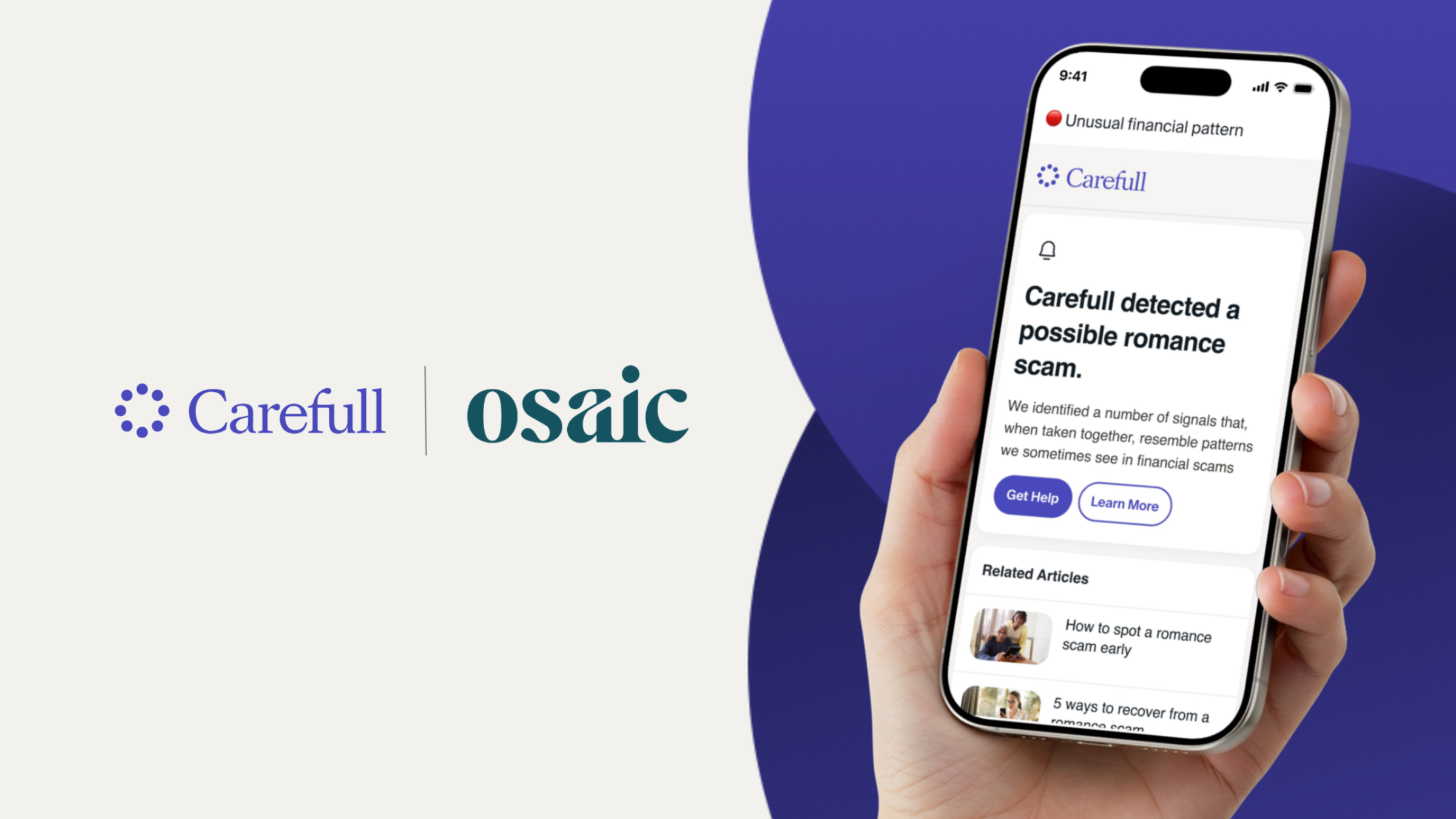How to Support Financial Caregiving Customers

There are an estimated 45 million financial caregivers in the U.S.—adults who are helping aging loved ones with daily money matters. Often, many who find themselves in this role aren’t prepared to handle the responsibility of managing someone else’s finances, and they don’t know where to turn to for help.
Fortunately, financial institutions are in a position to provide their financial caregiving customers with the help they need. Not only will this ensure that those customers are taking the right (legal) approach to managing their loved ones’ finances, but also it will drive customer loyalty and engagement. It’s a win for customers and the financial institution.
Here’s how your institution can help support those who are supporting aging loved ones.
Step 1: Ensure caregivers are accessing accounts legally
Financial caregivers often rely on an ad hoc system that doesn’t necessarily involve going through the proper channels to gain access to their loved ones’ accounts. For example, the people financial caregivers are helping might have given them the login credentials to their checking accounts. Caregivers assume that this permission is all they need, but they’re walking a fine line.
Financial institutions can ensure that financial caregivers are taking the right steps by educating them about options for accessing and managing loved ones’ accounts. This education campaign can be targeted to all adult customers and can involve guides included with monthly account statements, email blasts and pamphlets distributed in branches.
The campaign should provide details about all options available to manage a family member’s account, such as …
- View-only access to accounts
- Signature authority on accounts
- Joint accounts
- Power of attorney
- Living trusts
The pros and cons of each option should be listed, as should the bank’s policy relating to each. The more details you can provide to customers, the more likely they will be able to choose the best option for their caregiving situation.
Step 2: Offer caregiver-friendly account monitoring technology
Standard account alerts are not designed to give family caregivers insight into their loved ones’ daily money matters and to keep them informed about threats to their loved ones’ financial well-being. Financial institutions should offer financial caregiving customers a financial protection service that does the following:
- Detects and recognizes senior-specific risks such as gift card purchases, recurring donations, unusual transfers, certain merchant categories and scams as they arise in real time;
- Uses advanced technology across bank, credit card and investment accounts to determine what is “normal” for each individual; and
- Detects changes in transactional behavior so financial caregivers can be notified of suspicious activity.
Financial caregivers are often so busy that they don’t have time to constantly log onto their loved ones’ accounts to spot unusual transactions and money mistakes. The Carefull service can do the work for them.
Carefull can be linked to checking, savings, credit card and investment accounts to provide caregivers with view-only access to all of these accounts in one place. More importantly, Carefull’s technology analyzes accounts 24/7 and alerts caregivers to signs of fraud and a variety of issues that can impact older adults’ finances—such as duplicate or missed payments, changes in spending and more. Carefull also provides credit and identity monitoring, up to $1 million in identity theft insurance, and a digital Vault to securely store important documents, passwords and contacts in one place.
Step 3: Provide content specifically for financial caregivers
A financial institution that prioritizes supporting financial caregiving customers should actively inform them on how to protect their loved ones’ financial well-being. This includes alerting customers to current scams that can impact older adults, providing articles on managing someone else’s finances, and offering video courses or webinars. Through its team of financial journalists and experts, Carefull provides all of this content to its bank partners.
Articles and scam alerts are provided through microsites that Carefull creates for each partner to correspond with the partner’s brand, as well as directly through the Carefull digital platform. Carefull also offers live webinars on a range of financial caregiving topics at no additional charge to its bank partners and their customers. The Carefull team handles all logistics of webinars, including sending invites to partners’ customers.
Step 4: Eliminate hurdles for financial caregivers
Financial institutions have every reason to be cautious when it comes to accepting power of attorney documents. However, caregivers often report that they have trouble getting financial institutions to accept their loved ones’ valid power of attorney documents. As a result, caregivers face delays in getting access to their loved ones’ accounts when there are emergencies. Some caregivers grow so frustrated with the resistance they meet at their loved ones’ banks that they transfer their accounts to other banks.
To avoid creating unnecessary hurdles for caregivers while protecting customers from exploitation, financial institutions should have a written policy related to power of attorney documentation. All staff should be informed about the policy, and the policy should be shared with customers when they open accounts and periodically as a reminder. Financial institutions that are willing to work with well-intentioned caregivers will be more likely to retain customers and win new ones.
Step 5: Create a strategy for ongoing engagement
You might have some financial caregiving customers who reach out to your staff for support. However, it’s more likely that you’ll have to find ways to reach out to and connect with caregivers. One of the best ways to do this is actually to increase engagement with older customers who rely on support from family members or likely will have to get help in the near future.
This engagement can begin by asking older customers to name trusted contacts—family or friends the bank can contact if it has questions about activity in their accounts but can’t reach them. Then, staff can use the opportunity to encourage customers to invite their trusted contacts to come with them to a branch to discuss services the bank provides to support those customers and their family caregivers. The discussion can include a review of options to allow family members access to accounts, account-monitoring services and possibly even a referral to the financial institutions’s wealth management division for additional support.
Financial institutions partnering with the Carefull service have a built-in option for users to add trusted contacts to their accounts, including an ability to grant varying levels of view-only permissions. This makes it easier for financial institutions to ensure that their customers’ trusted contacts are informed about what is going on in their loved ones’ accounts. It fosters engagement while keeping funds in accounts secure.
To learn more about how to support family caregivers by providing Carefull's financial safety service, get in touch with our team.

3 Steps to Safer Money,
Try it Free for 30 Days
Step 1
Start your free,
no-risk trial
Step 2
Connect the accounts and cards you want protected
Step 3
Stay alerted to any
unusual activity





.png)

